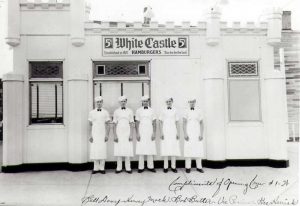Small Home Gazette, Summer 2019
Buy ‘Em by the Sack
White Castle Started It All
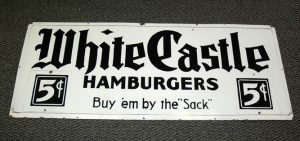 Most of us think of fast food as a fairly recent invention. But the original occupants of our bungalows likely ate at a White Castle.
Most of us think of fast food as a fairly recent invention. But the original occupants of our bungalows likely ate at a White Castle.
In 1921 in Wichita, Kansas, cook Walt Anderson partnered with businessman E.W. “Billy” Ingram to offer hamburgers. They did not invent the hamburger but introduced it to Americans at a cheap price—5 cents a burger.
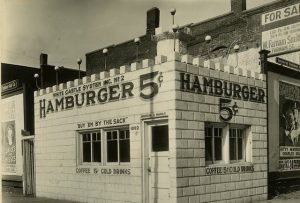 Before 1921, the hamburger was thought to be made from unsafe meat so the men had to change the public’s perception. Their restaurant, named White Castle, was small with a stainless steel interior. Employees wore spotless uniforms. The name was meant to suggest purity and nobility, and white stood for cleanliness. Their kitchen was in full view so people could see the meat being ground.
Before 1921, the hamburger was thought to be made from unsafe meat so the men had to change the public’s perception. Their restaurant, named White Castle, was small with a stainless steel interior. Employees wore spotless uniforms. The name was meant to suggest purity and nobility, and white stood for cleanliness. Their kitchen was in full view so people could see the meat being ground.
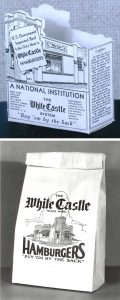
They were first to adapt an assembly line method to cooking, thus guaranteeing uniformity and efficiency. The small, square burgers (18 to a pound of meat) were cooked in large quantities on a hot grill; flipped and seared on both sides; then topped with sliced onions. A pickle was added at the end. (By the 1950s, five holes were added to each burger to speed up cooking. Steam rose up through the holes, completing the cooking so flipping was not required.)
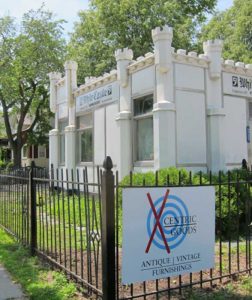
Past Bungalow Club board member Sabra Waldfogel and her husband Clark Miller sell antiques in White Castle building number 8 in Minneapolis.
Within two years, the restaurant was a success, and the partners branched out into other Midwestern markets. The owners needed to create an infrastructure to support what was becoming the first fast-food chain. They opened centralized bakeries, meat supply plants, and warehouses; set up a company to produce paper products, including the worker’s paper hats; and even created a subsidiary to manufacture the building materials used to construct new locations so that all buildings looked alike.
White Castle entered Minneapolis in 1926. White Castle Building Number 8 (built in 1927 as their eighth restaurant in Minneapolis) was one of the few prefabricated, portable buildings built by the chain. It has been in three locations. It now stands at 3252 Lyndale Avenue South, where it houses Xcentric Goods (xcentricgoods.com), a collection of dealers offering vintage and antique items. The building has been added to the National Register of Historic Places.
We can thank White Castle for introducing:
- the first fast-food chain,
- the first industrial strength spatula,
- the first heat-resistant paper food holders,
- the first buy-in-bulk promotional coupons in newspapers, and
- a burger with a distinctive taste, still popular today.









